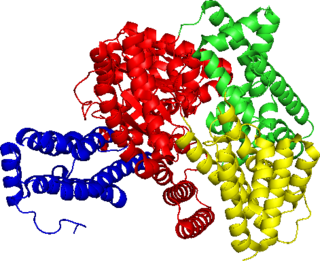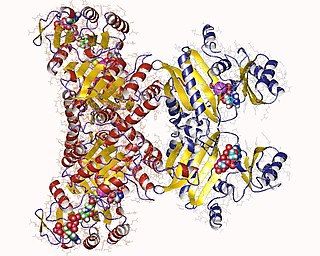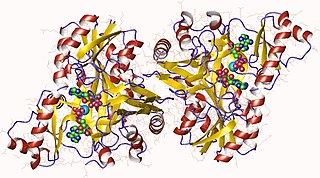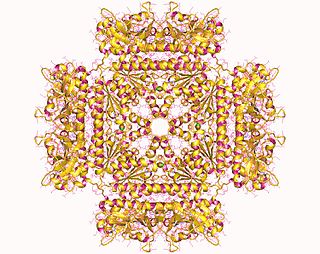| Geranoyl-CoA carboxylase | |||||||||
|---|---|---|---|---|---|---|---|---|---|
| Identifiers | |||||||||
| EC no. | 6.4.1.5 | ||||||||
| CAS no. | 37324-35-9 | ||||||||
| Databases | |||||||||
| IntEnz | IntEnz view | ||||||||
| BRENDA | BRENDA entry | ||||||||
| ExPASy | NiceZyme view | ||||||||
| KEGG | KEGG entry | ||||||||
| MetaCyc | metabolic pathway | ||||||||
| PRIAM | profile | ||||||||
| PDB structures | RCSB PDB PDBe PDBsum | ||||||||
| Gene Ontology | AmiGO / QuickGO | ||||||||
| |||||||||
In enzymology, a geranoyl-CoA carboxylase (EC 6.4.1.5) is an enzyme that catalyzes the chemical reaction
- ATP + geranoyl-CoA + HCO3- ADP + phosphate + 3-(4-methylpent-3-en-1-yl)pent-2-enedioyl-CoA
The 3 substrates of this enzyme are ATP, geranoyl-CoA, and HCO3-, whereas its 3 products are ADP, phosphate, and 3-(4-methylpent-3-en-1-yl)pent-2-enedioyl-CoA.
This enzyme belongs to the family of ligases, specifically those forming carbon–carbon bonds. The systematic name of this enzyme class is geranoyl-CoA:carbon-dioxide ligase (ADP-forming). Other names in common use include geranoyl coenzyme A carboxylase, and geranyl-CoA carboxylase. It employs one cofactor, biotin.




